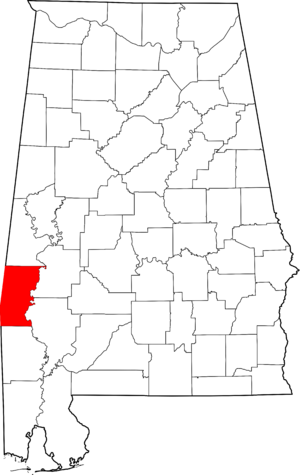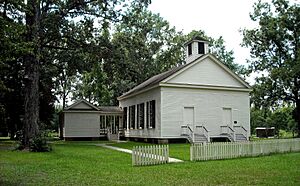National Register of Historic Places listings in Choctaw County, Alabama facts for kids
Have you ever wondered about old buildings and places that are really important to history? In Choctaw County, Alabama, there's a special list of places that are protected because of their historical value. This list is called the National Register of Historic Places. It helps make sure these important spots are kept safe for everyone to learn from and enjoy.
Right now, there is one very special place in Choctaw County that is on this list. Let's find out more about it!
Mount Sterling Methodist Church
The only place in Choctaw County on the National Register of Historic Places is the Mount Sterling Methodist Church. This beautiful old church is located near the town of Mount Sterling, Alabama. You can find it close to where County Roads 27 and 43 meet.
A Look Back in Time
The Mount Sterling Methodist Church was added to the National Register of Historic Places on May 8, 1986. This means it was officially recognized as a place with important historical meaning. Churches like this often tell us a lot about the people who lived in the area long ago. They show us how communities grew and what was important to them.
This church is a great example of the history and architecture of its time. It stands as a reminder of the past and the stories of the people who worshipped there for many years.
What is the National Register of Historic Places?
The National Register of Historic Places is a special list kept by the United States government. It includes buildings, sites, districts, structures, and objects that are important in American history, architecture, archaeology, engineering, or culture. When a place is added to this list, it gets special recognition and sometimes protection.
Why are Historic Places Important?
Historic places like the Mount Sterling Methodist Church help us understand our past. They are like giant storybooks that show us how people lived, worked, and built their communities. By protecting these sites, we make sure that future generations can also learn from them. It helps us connect with history in a real and tangible way.



